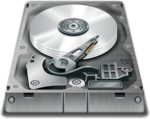Graphics: NVIDIA, Nouveau and Vulkan

-
NVIDIA 418.49.04 Linux Driver Brings Host Query Reset & YCbCr Image Arrays
NVIDIA has issued new Vulkan beta drivers leading up to the Game Developers Conference 2019 as well as this next week there being NVIDIA's GPU Technology Conference (GTC) nearby in California.
The only publicly mentioned changes to this weekend's NVIDIA 418.49.04 Linux driver update (and 419.62 on the Windows side) is support for the VK_EXT_host_query_reset and VK_EXT_ycbcr_image_arrays extensions.
-
Nouveau NIR Support Lands In Mesa 19.1 Git
It shouldn't come as any surprise, but landing today in Mesa 19.1 Git is the initial support for the Nouveau Gallium3D code to make use of the NIR intermediate representation as an alternative to Gallium's TGSI.
The Nouveau NIR support is part of the lengthy effort by Red Hat developers on supporting this IR as part of their SPIR-V and compute upbringing. The NIR support is also a stepping stone towards a potential NVIDIA Vulkan driver in the future.
-
Vulkan 1.1.104 Brings Native HDR, Exclusive Fullscreen Extensions
With the annual Game Developers' Conference (GDC) kicking off tomorrow in San Francisco, Khronos' Vulkan working group today released Vulkan 1.1.104 that comes with several noteworthy extensions.
Vulkan 1.1.104 is the big update for GDC 2019 rather than say Vulkan 1.2, but it's quite a nice update as part of the working group's weekly/bi-weekly release regiment. In particular, Vulkan 1.1.104 is exciting for an AMD native HDR extension and also a full-screen exclusive extension.
-
Interested In FreeSync With The RADV Vulkan Driver? Testing Help Is Needed
Since the long-awaited introduction of FreeSync support with the Linux 5.0 kernel, one of the missing elements has been this variable rate refresh support within the RADV Vulkan driver.
When the FreeSync/VRR bits were merged into Linux 5.0, the RadeonSI Gallium3D support was quick to land for OpenGL games but RADV Vulkan support was not to be found. Of course, RADV is the unofficial Radeon open-source Vulkan driver not officially backed by AMD but is the more popular driver compared to their official AMDVLK driver or the official but closed driver in their Radeon Software PRO driver package (well, it's built from the same sources as AMDVLK but currently with their closed-source shader compiler rather than LLVM). So RADV support for FreeSync has been one of the features users have been quite curious about and eager to see.
-

- Login or register to post comments
 Printer-friendly version
Printer-friendly version- 5011 reads
 PDF version
PDF version
More in Tux Machines
- Highlights
- Front Page
- Latest Headlines
- Archive
- Recent comments
- All-Time Popular Stories
- Hot Topics
- New Members
digiKam 7.7.0 is released
After three months of active maintenance and another bug triage, the digiKam team is proud to present version 7.7.0 of its open source digital photo manager. See below the list of most important features coming with this release.
|
Dilution and Misuse of the "Linux" Brand
|
Samsung, Red Hat to Work on Linux Drivers for Future Tech
The metaverse is expected to uproot system design as we know it, and Samsung is one of many hardware vendors re-imagining data center infrastructure in preparation for a parallel 3D world.
Samsung is working on new memory technologies that provide faster bandwidth inside hardware for data to travel between CPUs, storage and other computing resources. The company also announced it was partnering with Red Hat to ensure these technologies have Linux compatibility.
|
today's howtos
|









.svg_.png)
 Content (where original) is available under CC-BY-SA, copyrighted by original author/s.
Content (where original) is available under CC-BY-SA, copyrighted by original author/s.

One more about Vulkan
The-Forge Rendering Framework Refactors Input, Adds Other New Features